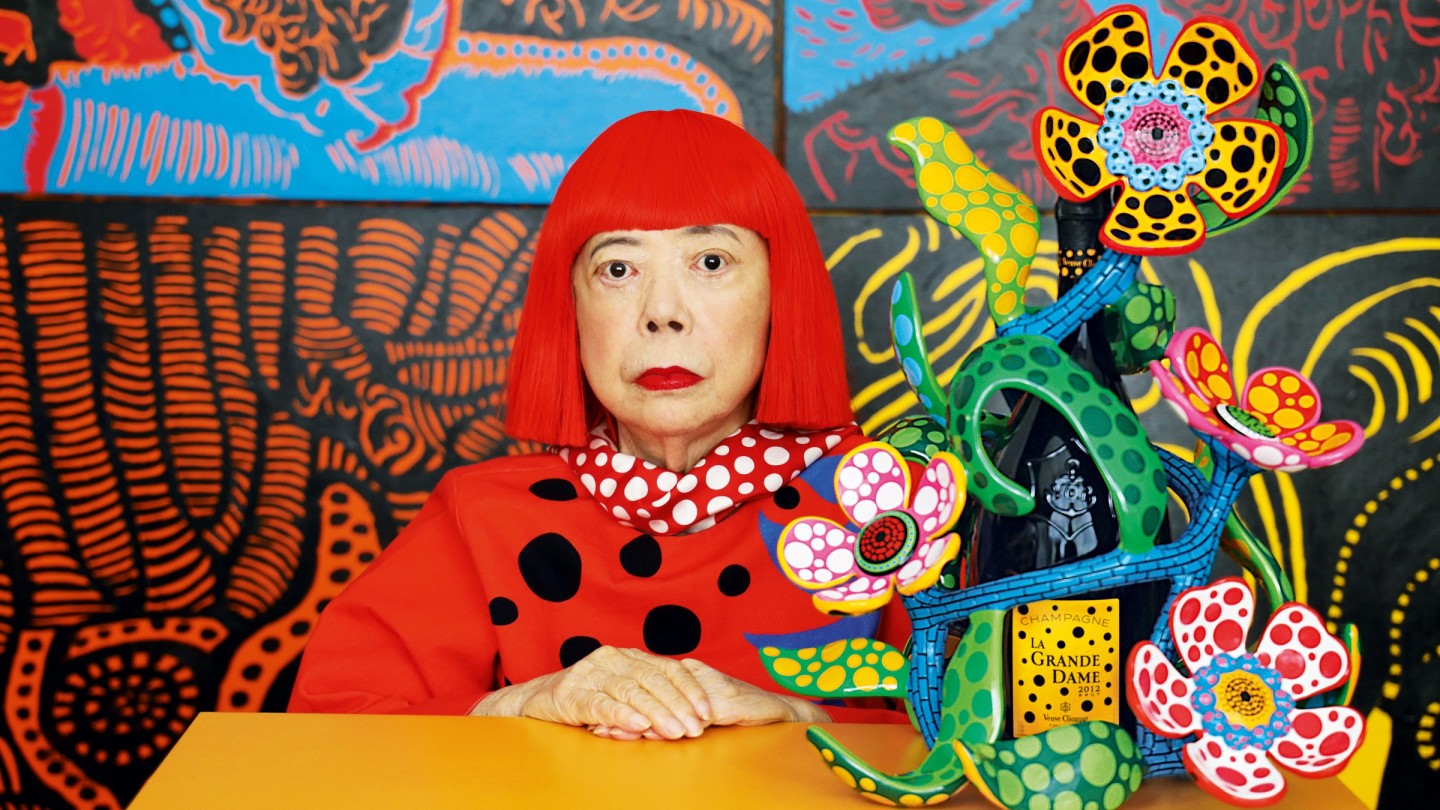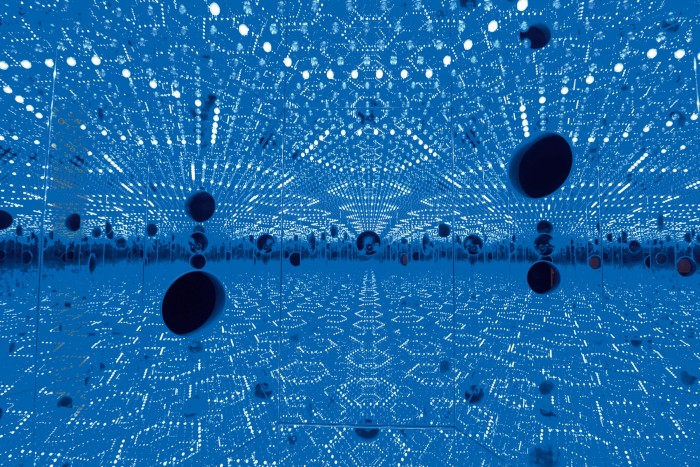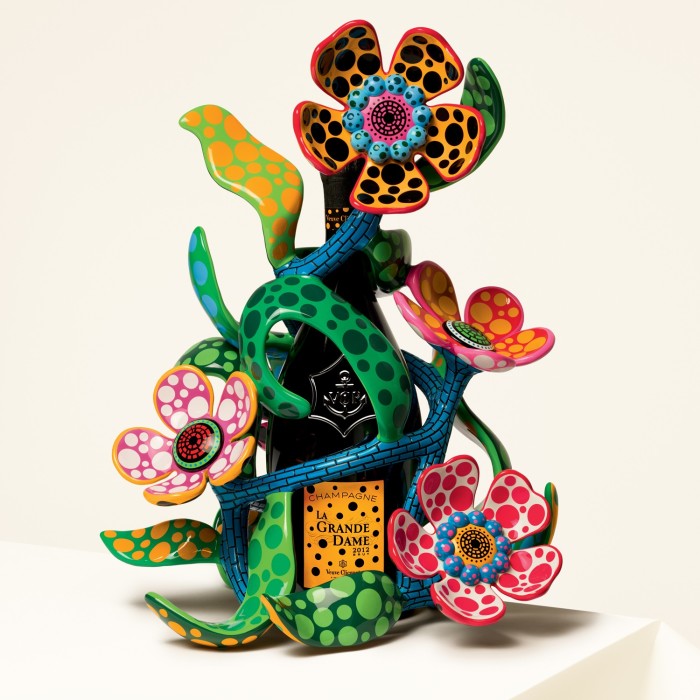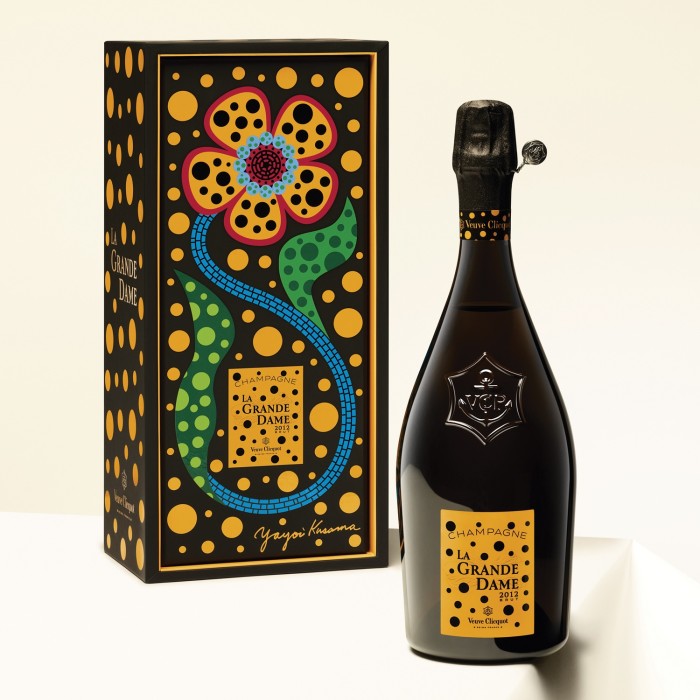What happened when Yayoi Kusama met Veuve Clicquot? Join the dots…

Roula Khalaf, Editor of the FT, selects her favourite stories in this weekly newsletter.
She is the high priestess of polka dots – the contemporary artist who arrived in New York from Japan in 1958, lured by the rise of abstract expressionism, and shook up the scene with her splashy, sexually charged performances and a fierceness sharpened by a conservative upbringing and authoritarian mother. Yayoi Kusama shaped minimalism, pop art and influenced Warhol – a face at The Factory hungry for fame amid the meth haze of musicians, muses and misfits – although their friendship eventually soured when she accused him of copying her ideas.
Ironically, it was Kusama’s fear of sex coupled with constant anxiety that fuelled her art. Her exploration of “self-obliteration”, a sense of disappearing, transported her into a wondrous world of dots – a dimension in which she (and they) dissolved into the wider, infinite universe.

Her obsession – explored in paintings, sculpture, performances, installations and, notoriously, on the naked body – emerged in childhood when she began to experience hallucinations (one, significantly, of a field of talking flowers with dot-like heads), and later became symbolic of her struggle with obsessive-compulsive disorder. She refers to her work as “art medicine”, the act and repetition of her art not only exposing the inner self but relieving her angst, although the painstaking process often exhausts her.
The artist, who has spent the past four decades living voluntarily (and almost reclusively) in a Tokyo psychiatric hospital, has other familiar fixations, expressed in obsessive repetition and bold colour: phallic forms (a sign, some say, of an Electra complex), flowers (her psychedelic sculptures are often Triffid-like) and pumpkins (a comforting, “humorous visual” evocation of her playful side, also present in her anthropomorphic childhood visions).

But dots are a recurrent theme, a weapon with which she waged war on the male-dominated art establishment of the 1950s and ’60s. “Bring on Picasso, bring on Matisse, bring on anybody!” she once defiantly proclaimed. “I would stand up to them all with a single polka dot!” Donald Judd was an early supporter of her work and one of the first to buy an exhibition piece, but Kusama’s five minutes of artistic fame faded with time. The media turned scathingly to the eroticism of her work, their disdain compounded by her seemingly endless need for self-promotion.
Kusama, of course, has had the last laugh. Aged 91 and still working her look-at‑me red wig and polka-dot dresses (in public, at least), she now consistently ranks among the world’s highest-selling living female artists. She continues to work prolifically and – as her latest collaboration with the French champagne house Veuve Clicquot attests – diversely. The project at first seems unlikely, but Kusama has form for exploring the intersection of art and consumerism as a way of promoting her work. She established her own clothing company in the 1960s and – having reemerged phoenix-like as an artist at the Venice Biennale in 1993 following years of obscurity – went on to create lip-glosses for Lancôme (2011) and a collection with Marc Jacobs for Louis Vuitton (2012), bringing her work to the attention of a wider audience.

Now, in the age of the Insta star, her art has found a new following among the selfie hunters – many of them waiting in line for two hours at her 2019 exhibition at David Zwirner’s New York gallery.
In fact, this is not the first time that Kusama has rubbed shoulders with the champagne house – she applied her famous polka dots to an original portrait of Madame Clicquot for an auction in Tokyo in 2006. And if one puts any cynicism aside, it is not so much of a stretch to see a synergy in Kusama’s childhood drawings of dots floating like bubbles in the air to those swirling around a flute glass.
My Heart That Blooms
in the Darkness of the Night
From all my heart,
the life of flowers flew away.
My everlasting affection for the flowers,
flew off beyond the universe
to show its vitality,
to gaze at the extremes of life.
– Yayoi Kusama
© Yayoi Kusama
Kusama has penned a poem, “My Heart That Blooms in the Darkness of the Night” (see above), to commemorate the collaboration – an act perfectly in tune with her MO, given that she has already published several poetry books, written 18 novels and an autobiography, and produced a collection of films.
She has also designed the maison’s La Grande Dame 2012 bottle and gift box, along with a limited-edition magnum that shares the same name as her poem. The work is unmistakably Kusama: her psychedelic flowers twist around it, enveloping it (one might say obliterating it) in sinewy spotted stems and blooms. There are 100 numbered pieces – a fusion of resin and metal copper with cellulose paint and clear lacquer finishes – each of which took 250 hours to make (and are priced as works of art at €30,000 each). The collaboration will be launched at Selfridges’ Corner Shop in London on 9 November for those wanting a gallery view of the collection. Kusama, of course, will not be in attendance, remaining in her artistic bubble in Japan.
Comments